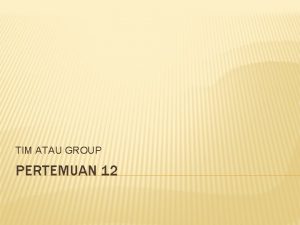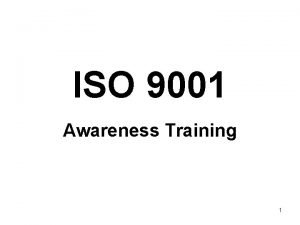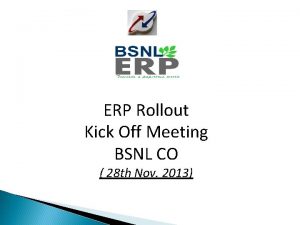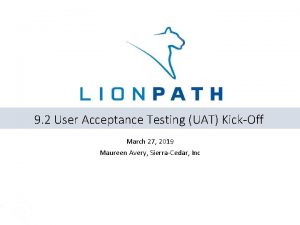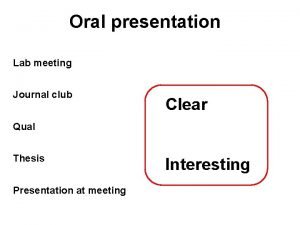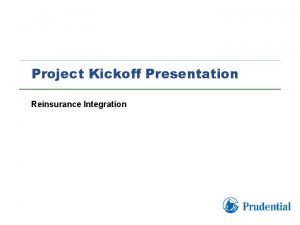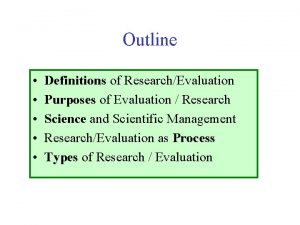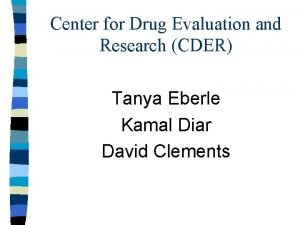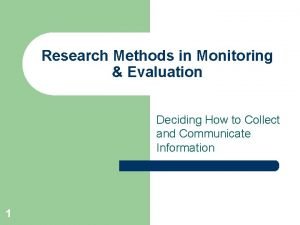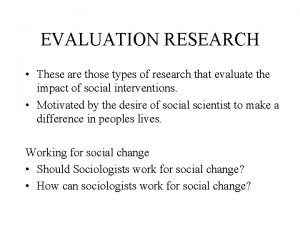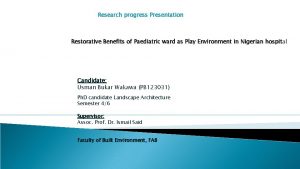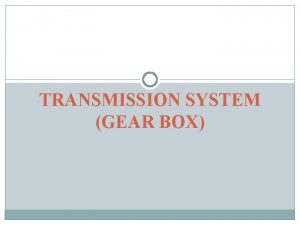Research Evaluation Gear Meeting 2 presentation Gear Team






























































- Slides: 62


Research & Evaluation Gear Meeting 2 presentation Gear Team Members: March 2018

REG 1: Indicators of key breastfeeding practices are routinely included in periodic national surveys. • Indicators of key breastfeeding practices are vital to understanding the current state of breastfeeding, trends in breastfeeding practices, and identifying where improvements need to be made. These indicators can include the prevalence of: children ever breastfed, early initiation of skin-toskin/breastfeeding, exclusive breastfeeding under 6 months, continued breastfeeding at 1 year, and continued breastfeeding at 2 years. This benchmark assesses if indicators of these key breastfeeding practices are included in national surveys on a routine basis at least once every 5 years. 12/23/2021 3

REG 1: Indicators of key breastfeeding practices are routinely included in periodic national surveys. ▸ No progress has been made if indicators of key breastfeeding practices are not routinely included in periodic national surveys. ▸ Minimal progress has been made if indicators of key breastfeeding practices are routinely included in periodic national surveys and this data are updated at least once every 10 years. ▸ Partial progress has been made if indicators of key breastfeeding practices are routinely included in periodic national surveys and this data are renewed at least once every 5 years. ▸ Major progress has been made if indicators of key breastfeeding practices are routinely included in periodic national surveys and this data are renewed more than once every 5 years. 12/23/2021 4

REG 1: Methodology used for data collection • E. g. if it was an interview (who they interviewed and asked), a media study (what media they looked for and what keywords they searched for), a document review (what documents they reviewed) 12/23/2021 5

REG 1: Findings • Summary of what was found from the data collected 12/23/2021 6

REG 1 Proposed Score: SCORE 7

REG 1: Gaps and recommendations Gaps Recommendations • Gap 1 • Recommendation 1 • Gap 2 • Recommendation 2 • Etc. 12/23/2021 8

REG 2: Key breastfeeding practices are monitored in routine health information systems. According to the WHO, health information systems have four key functions: data generation, compilation, analysis and synthesis, and communication and use. “The health information system collects data from the health sector and other relevant sectors, analyses the data and ensures their overall quality, relevance and timeliness, and converts data into information for health-related decision-making. ” 15 Monitoring key breastfeeding practices in routine health information systems serves to update decision makers on current breastfeeding status nationally and help them decide when to intervene. This benchmark assesses if key breastfeeding practices are monitored in routine health information systems, and gauges their coverage and if key indicators have been publicly reported. Key breastfeeding practices that should be monitored in routine health information systems are: children ever breastfed, early initiation of breastfeeding, exclusive breastfeeding under 6 months, continued breastfeeding at 1 year, and continued breastfeeding at 2 years. 12/23/2021 9

REG 2: Key breastfeeding practices are monitored in routine health information systems. ▸ No progress has been made if key breastfeeding practices are not monitored in routine health information systems. ▸ Minimal progress has been made if key breastfeeding practices are monitored in routine health information systems, but the systems are not electronic nor have key indicators been publicly reported. ▸ Partial progress has been made if key breastfeeding practices are monitored in routine health information electronic systems, but the systems do not have full coverage (i. e. national, subnational, and local coverage) nor have key indicators been publicly reported. ▸ Major progress has been made if key breastfeeding practices are monitored in routine health information electronic systems, and the systems have full coverage (i. e. national, subnational, and local coverage) and key indicators have been publicly reported. 12/23/2021 10

REG 2: Methodology used for data collection • E. g. if it was an interview (who they interviewed and asked), a media study (what media they looked for and what keywords they searched for), a document review (what documents they reviewed) 12/23/2021 11

REG 2: Findings • Summary of what was found from the data collected 12/23/2021 12

REG 2 Proposed Score: SCORE 13

REG 2: Gaps and recommendations Gaps Recommendations • Gap 1 • Recommendation 1 • Gap 2 • Recommendation 2 • Etc. 12/23/2021 14

REG 3: Data on key breastfeeding practices are available at national and sub-national levels, including the local/municipal level. To be able to know where to direct resources to scale up breastfeeding programs, data on key breastfeeding practices needs to be available at national, subnational and local/municipal levels. National surveys must be able to stratify data to these levels with reasonable representation. Data that should be available on key breastfeeding practices include: children ever breastfed, early initiation of breastfeeding, exclusive breastfeeding under 6 months, continued breastfeeding at 1 year, and continued breastfeeding at 2 years. This benchmark assesses if data on key breastfeeding practices are available and the regional levels of this availability. 12/23/2021 15

REG 3: Data on key breastfeeding practices are available at national and sub-national levels, including the local/municipal level. ▸ No progress has been made if data on key breastfeeding practices are not available at all levels: national, subnational and local/municipal. ▸ Minimal progress has been made if data on key breastfeeding practices are only available at the national level. ▸ Partial progress has been made if data on key breastfeeding practices are available at the national level and subnational levels. ▸ Major progress has been made if data on key breastfeeding practices are available at the national, subnational and local/municipal levels. 12/23/2021 16

REG 3: Methodology used for data collection • E. g. if it was an interview (who they interviewed and asked), a media study (what media they looked for and what keywords they searched for), a document review (what documents they reviewed) 12/23/2021 17

REG 3: Findings • Summary of what was found from the data collected 12/23/2021 18

REG 3 Proposed Score: SCORE 19

REG 3: Gaps and recommendations Gaps Recommendations • Gap 1 • Recommendation 1 • Gap 2 • Recommendation 2 • Etc. 12/23/2021 20

REG 4: Data on key breastfeeding practices are representative of vulnerable groups. Understanding breastfeeding practices of key vulnerable groups aids in decision making and advocacy. This benchmark assesses the availability and representativeness of key breastfeeding practice data for vulnerable groups. Key breastfeeding practices data that should be available are: children ever breastfed, early initiation of breastfeeding, exclusive breastfeeding under 6 months, continued breastfeeding at 1 year, and continued breastfeeding at 2 years. Vulnerable groups refer to populations at risk due to social, economic, cultural or biomedical circumstances. These can include indigenous populations, internally displaced populations, refugees, orphans, and HIV infected mothers and children. Countries can choose to include more vulnerable groups, if desired. 12/23/2021 21

REG 4: Data on key breastfeeding practices are representative of vulnerable groups. ▸ No progress has been made if data on key breastfeeding practices are not representative of vulnerable groups. ▸ Minimal progress has been made if data on key breastfeeding practices are representative of vulnerable groups at the national level. ▸ Partial progress has been made if data on key breastfeeding practices are representative of vulnerable groups at the national and subnational levels. ▸ Major progress has been made if data on key breastfeeding practices are representative of vulnerable groups at the national, subnational and local/municipal levels. 12/23/2021 22

REG 4: Methodology used for data collection • E. g. if it was an interview (who they interviewed and asked), a media study (what media they looked for and what keywords they searched for), a document review (what documents they reviewed) 12/23/2021 23

REG 4: Findings • Summary of what was found from the data collected 12/23/2021 24

REG 4 Proposed Score: SCORE 25

REG 4: Gaps and recommendations Gaps Recommendations • Gap 1 • Recommendation 1 • Gap 2 • Recommendation 2 • Etc. 12/23/2021 26

REG 5: Indicators of key breastfeeding practices are placed in the public domain on a regular basis. This benchmark assesses whether indicators of key breastfeeding practices are placed in the public domain and the frequency that this is done. The “public domain” refers to making: a) information/results about key breastfeeding practices available and accessible to all individuals using a publicly available method, such as published reports, media coverage, social media sites accessible to the public, etc. and b) the databases available and accessible to researchers as well as the general public. Indicators of key breastfeeding practices should include: children ever breastfed, early initiation of breastfeeding, exclusive breastfeeding under 6 months, continued breastfeeding at 1 year, and continued breastfeeding at 2 years. 12/23/2021 27

REG 5: Indicators of key breastfeeding practices are placed in the public domain on a regular basis. ▸ No progress has been made if themes of key breastfeeding practices (i. e. , reports, breastfeeding databases, etc. ) are not placed in the public domain. ▸ Minimal progress has been made if themes of key breastfeeding practices (i. e. , reports, breastfeeding databases, etc. ) are placed in the public domain less than once every two years. ▸ Partial progress has been made if themes of key breastfeeding practices (i. e. , reports, breastfeeding databases, etc. ) are placed in the public domain every two years. ▸ Major progress has been made if themes of key breastfeeding practices (i. e. , reports, breastfeeding databases, etc. ) are placed in the public domain annually. 12/23/2021 28

REG 5: Methodology used for data collection • E. g. if it was an interview (who they interviewed and asked), a media study (what media they looked for and what keywords they searched for), a document review (what documents they reviewed) 12/23/2021 29

REG 5: Findings • Summary of what was found from the data collected 12/23/2021 30

REG 5 Proposed Score: SCORE 31

REG 5: Gaps and recommendations Gaps Recommendations • Gap 1 • Recommendation 1 • Gap 2 • Recommendation 2 • Etc. 12/23/2021 32

REG 6: A monitoring system is in place to track implementation of the Code. Monitoring systems systematically and routinely collect data on process indicators in order to track progress of programs or initiatives to ensure implementation and effectiveness. Thus, process indicators measure whether program or initiative activities have been conducted and the ways in which they are supposed to be implemented. This benchmark assesses whethere is a monitoring system in place to track implementation of the Code. According to the WHO, monitoring mechanisms need to have the following criteria to ensure efficiency of implementation of the Code: a) independence and transparency; b) freedom from commercial influence; c) empowerment to investigate code violations; d) empowerment to impose legal sanctions. 16 Process indicators that track implementation of the Code include: a) prohibition of advertising and sales promotions of breast milk substitutes; b) prohibition of free or low-cost supplies of breast milk substitutes and materials/gifts to health workers and health facilities; c) requiring appropriate labeling with message of superiority of breastfeeding. 12/23/2021 33

REG 6: A monitoring system is in place to track implementation of the Code. ▸ No progress has been made if there is no monitoring system in place to track implementation of the Code. ▸ Minimal progress has been made if there is a monitoring system in place to track implementation of the Code but it is not operational nor are process indicators publicly reported. ▸ Partial progress has been made if there is a monitoring system in place to track implementation of the Code and it is operational or process indicators are publicly reported. ▸ Major progress has been made if there is a monitoring system in place to track implementation of the Code and it is operational and process indicators are publicly reported. 12/23/2021 34

REG 6: Methodology used for data collection • E. g. if it was an interview (who they interviewed and asked), a media study (what media they looked for and what keywords they searched for), a document review (what documents they reviewed) 12/23/2021 35

REG 6: Findings • Summary of what was found from the data collected 12/23/2021 36

REG 6 Proposed Score: SCORE 37

REG 6: Gaps and recommendations Gaps Recommendations • Gap 1 • Recommendation 1 • Gap 2 • Recommendation 2 • Etc. 12/23/2021 38

REG 7: A monitoring system is in place to track enforcement of maternity protection legislation. Monitoring systems systematically and routinely collect data on process indicators in order to track progress of programs or initiatives to ensure implementation and effectiveness. This benchmark assesses the presence of a monitoring system to track enforcement of maternity protection legislation. If maternity protection legislation exists, a monitoring system will track the progress countries are making to enforce the legislation 12/23/2021 39

REG 7: A monitoring system is in place to track enforcement of maternity protection legislation. ▸ No progress has been made if there is no monitoring system in place to enforce maternity protection legislation. ▸ Minimal progress has been made if there is a monitoring system in place to enforce maternity protection legislation but it is not operational nor are process indicators publicly reported. ▸ Partial progress has been made if there is a monitoring system in place to enforce maternity protection legislation and it is operational or process indicators are publicly reported. ▸ Major progress has been made if there is a monitoring system in place to enforce maternity protection legislation and it is operational and process indicators are publicly reported. 12/23/2021 40

REG 7: Methodology used for data collection • E. g. if it was an interview (who they interviewed and asked), a media study (what media they looked for and what keywords they searched for), a document review (what documents they reviewed) 12/23/2021 41

REG 7: Findings • Summary of what was found from the data collected 12/23/2021 42

REG 7 Proposed Score: SCORE 43

REG 7: Gaps and recommendations Gaps Recommendations • Gap 1 • Recommendation 1 • Gap 2 • Recommendation 2 • Etc. 12/23/2021 44

REG 8: A monitoring system is in place to track provision of lactation counseling/management and support. Effective lactation counseling/management and support is essential to scaling up breastfeeding. A national monitoring system that tracks the provision of lactation counseling/management and support can ensure that these services are available and being provided countrywide. Monitoring systems systematically and routinely collect data on process indicators in order to track progress of programs or initiatives to ensure implementation and effectiveness. 12/23/2021 45

REG 8: A monitoring system is in place to track provision of lactation counseling/management and support. ▸ No progress has been made if there is no monitoring system in place to track provision of lactation counseling/management and support. ▸ Minimal progress has been made if there is a monitoring system in place to track provision of lactation counseling/management and support but it is not operational nor are process indicators publicly reported. ▸ Partial progress has been made if there is a monitoring system in place to track provision of lactation counseling/management and it is operational or process indicators are publicly reported. ▸ Major progress has been made if there is a monitoring system in place to track provision of lactation counseling/management and support and it is operational and process indicators are publicly reported. 12/23/2021 46

REG 8: Methodology used for data collection • E. g. if it was an interview (who they interviewed and asked), a media study (what media they looked for and what keywords they searched for), a document review (what documents they reviewed) 12/23/2021 47

REG 8: Findings • Summary of what was found from the data collected 12/23/2021 48

REG 8 Proposed Score: SCORE 49

REG 8: Gaps and recommendations Gaps Recommendations • Gap 1 • Recommendation 1 • Gap 2 • Recommendation 2 • Etc. 12/23/2021 50

REG 9: A monitoring system is in place to track implementation of the BFHI/Ten Steps. Monitoring systems systematically and routinely collect data on process indicators in order to track progress of programs or initiatives to ensure implementation and effectiveness. This benchmark assesses the presence and operational quality of a monitoring system to track implementation of BFHI/Ten Steps: 12/23/2021 51

REG 9: A monitoring system is in place to track implementation of the BFHI/Ten Steps. ▸ No progress has been made if there is no monitoring system in place to track implementation of BFHI/Ten Steps. ▸ Minimal progress has been made if there is a monitoring system in place to track implementation of BFHI/Ten Steps but it is not operational nor are process indicators publicly reported. ▸ Partial progress has been made if there is a monitoring system in place to track implementation of BFHI/Ten Steps and it is operational or process indicators are publicly reported. ▸ Major progress has been made if there is a monitoring system in place to track implementation of BFHI/Ten Steps and it is operational and process indicators are publicly reported 12/23/2021 52

REG 9: Methodology used for data collection • E. g. if it was an interview (who they interviewed and asked), a media study (what media they looked for and what keywords they searched for), a document review (what documents they reviewed) 12/23/2021 53

REG 9: Findings • Summary of what was found from the data collected 12/23/2021 54

REG 9 Proposed Score: SCORE 55

REG 9: Gaps and recommendations Gaps Recommendations • Gap 1 • Recommendation 1 • Gap 2 • Recommendation 2 • Etc. 12/23/2021 56

REG 10: A monitoring system is in place to track behavior change communication activities. Implementing behavior change communication activities is important to improving breastfeeding practices and scaling up breastfeeding protection, promotion and support. This benchmark assesses the presence of a monitoring system to track the process indicators for behavior change communication activities. Monitoring systems systematically and routinely collect data on process indicators in order to track progress of programs or initiatives to ensure implementation and effectiveness. These process indicators can include: number of communication channels used, number of breastfeeding BCC messages delivered, proportion of country reached by breastfeeding BCC messages, proportion of households with knowledge of breastfeeding BCC messages. 12/23/2021 57

REG 10: A monitoring system is in place to track behavior change communication activities. ▸ No progress has been made if there is no monitoring system in place to track behavior change communication activities. ▸ Minimal progress has been made if there is a monitoring system in place to track behavior change communication activities but it is not operational nor are process indicators publicly reported. ▸ Partial progress has been made if there is a monitoring system in place to track behavior change communication activities and it is operational or process indicators are publicly reported. ▸ Major progress has been made if there is a monitoring system in place to track behavior change communication activities and it is operational and process indicators are publicly reported. 12/23/2021 58

REG 10: Methodology used for data collection • E. g. if it was an interview (who they interviewed and asked), a media study (what media they looked for and what keywords they searched for), a document review (what documents they reviewed) 12/23/2021 59

REG 10: Findings • Summary of what was found from the data collected 12/23/2021 60

REG 10 Proposed Score: SCORE 61

REG 10: Gaps and recommendations Gaps Recommendations • Gap 1 • Recommendation 1 • Gap 2 • Recommendation 2 • Etc. 12/23/2021 62
 Team meeting presentation template
Team meeting presentation template Internal and external gear pump
Internal and external gear pump Is a gear a wheel?
Is a gear a wheel? Today meeting or today's meeting
Today meeting or today's meeting Proposal kickoff meeting agenda
Proposal kickoff meeting agenda What is meeting and types of meeting
What is meeting and types of meeting What is meeting and types of meeting
What is meeting and types of meeting Meeting evaluation
Meeting evaluation Meeting evaluation
Meeting evaluation Cft meeting in company
Cft meeting in company Tims meeting
Tims meeting Teams around the family
Teams around the family Team meeting objectives
Team meeting objectives Team review meeting
Team review meeting Early help assessment examples
Early help assessment examples Demobilization plan sample
Demobilization plan sample Transfer of command
Transfer of command Team meeting objectives
Team meeting objectives Sales force evaluation process
Sales force evaluation process Going native project management
Going native project management Team spirit becomes team infatuation
Team spirit becomes team infatuation The white team cheers for the blue team, just like
The white team cheers for the blue team, just like Iso awareness training for employees
Iso awareness training for employees Erp kick off meeting presentation
Erp kick off meeting presentation Uat sign off email template
Uat sign off email template Lab meeting presentation example
Lab meeting presentation example Hom herbalife opportunity meeting
Hom herbalife opportunity meeting Project kickoff presentation
Project kickoff presentation Evaluation criteria for case study presentation
Evaluation criteria for case study presentation Heuristic evaluation presentation
Heuristic evaluation presentation Multimedia presentation group
Multimedia presentation group Company capability presentation
Company capability presentation Evaluation research definition
Evaluation research definition Research action communication evaluation
Research action communication evaluation Center for drug evaluation and research
Center for drug evaluation and research Cars checklist for research source evaluation
Cars checklist for research source evaluation Counseling outcome research and evaluation
Counseling outcome research and evaluation Types of evaluation design
Types of evaluation design Research methods in monitoring and evaluation
Research methods in monitoring and evaluation Types of evaluation research
Types of evaluation research Brow presentation birth
Brow presentation birth Cephalic presentation
Cephalic presentation What to say at the end of a presentation
What to say at the end of a presentation Powerpoint outline example
Powerpoint outline example Parts of research
Parts of research Report preparation and presentation in marketing research
Report preparation and presentation in marketing research Research progress presentation
Research progress presentation Research report vs research proposal
Research report vs research proposal Research design vs research method
Research design vs research method Sample of appendices in research paper
Sample of appendices in research paper Conclusive quantitative research
Conclusive quantitative research Scope of action research
Scope of action research Explain types of research
Explain types of research Contrast applied research and basic research
Contrast applied research and basic research Identification of the problem in research
Identification of the problem in research Research instrument in experimental research
Research instrument in experimental research Longitudinal research and cross sectional research
Longitudinal research and cross sectional research Correlation vs causal comparative
Correlation vs causal comparative Chapter 3 research example
Chapter 3 research example Example of applied research
Example of applied research Bryman bell
Bryman bell Purpose of reseach
Purpose of reseach Qualitative research research design
Qualitative research research design










